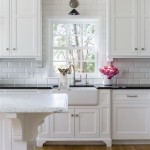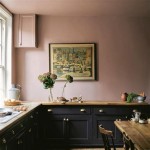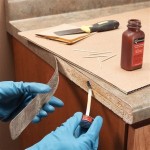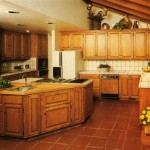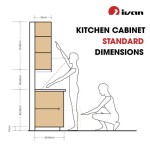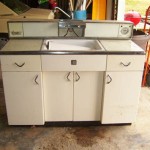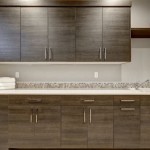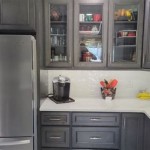Retro Kitchen Cabinets: A Timeless Blend of Style and Functionality
Retro kitchen cabinets represent a significant design movement, encapsulating the aesthetic values and functional priorities of various eras, primarily the mid-20th century. These cabinets are more than just storage solutions; they are focal points that evoke nostalgia and add character to a kitchen space. Understanding the nuances of retro kitchen cabinet design requires exploring different styles, materials, and hardware choices that define this enduring trend.
The term "retro" is broad, encompassing a range of styles that span from the 1940s through the 1970s. Each decade contributed unique elements, influencing the shapes, colors, and overall feel of kitchen cabinetry. Successfully integrating retro cabinets into a modern kitchen involves careful consideration of these historical influences and how they can be adapted to contemporary lifestyles.
Understanding Key Retro Cabinet Styles
Retro kitchen cabinets are not monolithic; rather, they encompass several distinct styles. Identifying the dominant aesthetic of a particular era is crucial for selecting cabinets that authentically reflect the intended design. Three prominent styles often seen in retro kitchens are 1950s Diner, Atomic Ranch, and 1970s Earthy.
1950s Diner: This style draws inspiration from the iconic American diners of the 1950s. Cabinets from this era are characterized by their vibrant colors, often featuring shades of turquoise, pink, red, and pastel yellow. Chrome accents are prevalent, appearing on cabinet pulls, handles, and even edging. The cabinet doors are typically flat-fronted or feature simple, rounded edges. Materials used include metal, laminate, and painted wood. Functionality is straightforward, focusing on practicality and ease of cleaning. The overall ambiance is cheerful and optimistic, reflecting the post-war economic boom and a sense of forward momentum.
Atomic Ranch: The Atomic Ranch style, popular from the late 1940s through the 1960s, takes its name from the space-age fascination of the era. Cabinets are typically made from wood, often featuring natural finishes or light stains. Geometric patterns and minimalist designs are common. Hardware tends to be sleek and streamlined, often made from brushed metal or chrome. Colors are more subdued than in the 1950s diner style, with earth tones, muted greens, and oranges dominating. The Atomic Ranch aesthetic emphasizes clean lines and functionality, reflecting a modern and uncluttered lifestyle. This style integrates well with open-plan layouts and emphasizes a connection to the outdoors.
1970s Earthy: Moving into the 1970s, kitchen cabinet designs took on a more earthy and natural aesthetic. Wood cabinets, often with a dark stain or natural finish, were highly popular. Shaker-style doors with recessed panels were frequently used. Hardware shifted towards more organic shapes and materials, incorporating wood, brass, and ceramic elements. Color palettes included avocado green, harvest gold, and burnt orange, reflecting the era’s connection to nature and a more laid-back lifestyle. The 1970s style often incorporates textured surfaces and a sense of warmth and comfort, creating a cozy and inviting kitchen space. This style can be paired with natural elements like brick or stone accents for a cohesive look.
Material Considerations for Retro Cabinets
The materials used in retro kitchen cabinets are as important as the style itself. The choice of material influences not only the aesthetic but also the durability, maintenance requirements, and overall cost of the cabinets. Understanding the strengths and weaknesses of different materials is crucial for making informed decisions.
Metal: Metal cabinets were particularly popular in the 1940s and 1950s, offering durability and easy cleaning. Steel was the most common metal used, often finished with a baked enamel coating in bright colors. Metal cabinets are resistant to moisture and pests, making them a practical choice for kitchens. However, they can be prone to dents and scratches, and the enamel finish can chip over time. Restoration of original metal cabinets can be challenging and costly.
Wood: Wood has been a staple material for kitchen cabinets for centuries, and it remained a popular choice throughout the retro era. Different types of wood were used, each offering unique characteristics. Birch and maple were common choices for their affordability and ability to accept paint or stain. Oak was also used, particularly in the 1970s, for its distinctive grain pattern. Wood cabinets can be susceptible to moisture damage and require regular maintenance to prevent warping or cracking. However, their warmth and natural beauty make them a desirable option for many homeowners.
Laminate: Laminate became increasingly popular in the mid-20th century as a cost-effective and durable alternative to wood. Laminate cabinets consist of a thin layer of plastic laminate adhered to a substrate such as particleboard or MDF. Laminate is available in a wide range of colors and patterns, including wood-grain finishes that mimic the look of real wood. Laminate cabinets are easy to clean and resistant to scratches and stains. However, they can be susceptible to damage from heat and moisture, and the edges can chip or peel over time.
Hardware and Detailing in Retro Cabinetry
The hardware and detailing on retro kitchen cabinets play a significant role in defining their aesthetic. Knobs, pulls, hinges, and other decorative elements contribute to the overall style and can be used to enhance the authenticity of the design. Paying attention to these details is essential for achieving a cohesive and visually appealing retro kitchen.
Knobs and Pulls: The style of knobs and pulls varied significantly across different retro eras. In the 1950s, chrome knobs and pulls with rounded edges were common, often featuring a small colored inset. The Atomic Ranch style favored sleek, minimalist pulls made from brushed metal or chrome. In the 1970s, hardware became more organic, with wood, brass, and ceramic knobs and pulls incorporating natural shapes and textures. Choosing the appropriate hardware is crucial for accurately representing the intended retro style.
Hinges: The hinges used on retro kitchen cabinets can also provide clues about their age and style. Concealed hinges were less common in earlier retro eras, with exposed hinges being the norm. These hinges often featured decorative details and were made from materials such as brass or chrome. As the retro era progressed, concealed hinges became more prevalent, offering a cleaner and more modern look. Reproductions of vintage hinges are readily available, allowing homeowners to maintain the authenticity of their retro cabinets while enjoying the benefits of modern hardware.
Edge Detailing: The edge detailing on cabinet doors and drawers can also contribute to the overall retro aesthetic. Flat-fronted doors with simple, rounded edges were common in the 1950s. Shaker-style doors with recessed panels were popular in the 1970s. Applying edge banding or decorative trim can further enhance the retro look. For example, adding chrome edging to laminate cabinets can evoke the diner style of the 1950s. Careful attention to these details can significantly impact the visual appeal of retro kitchen cabinets.
Color and Finish: The color and finish of retro kitchen cabinets are crucial elements in capturing the intended aesthetic. Bright, vibrant colors were characteristic of the 1950s, while more subdued earth tones were prevalent in the 1970s. Finishes can range from high-gloss enamel to matte paint or natural wood stains. The choice of color and finish should be carefully considered to create a cohesive and authentic retro kitchen.
Integration with Modern Appliances: Successfully integrating retro kitchen cabinets into a modern kitchen requires careful planning. Modern appliances can often clash with the vintage aesthetic of retro cabinets. One solution is to conceal modern appliances behind cabinet doors or panels that match the retro style. Another approach is to choose appliances with a retro-inspired design, featuring rounded shapes and vintage colors. Balancing modern functionality with retro aesthetics is key to creating a kitchen that is both stylish and practical.
Preserving the authenticity of retro kitchen cabinets often involves careful restoration. Original cabinets may require refinishing, repair of damaged hardware, or replacement of missing parts. Working with a qualified restoration professional can help ensure that the cabinets are restored to their original condition while preserving their historical value. Reproduction retro cabinets offer an alternative for homeowners who want the look of vintage cabinets without the challenges of restoration. These reproductions are often made using modern materials and construction techniques, offering improved durability and functionality.

25 Cool Retro Kitchens How To Decorate A Kitchen In Throwback Style

Retro Kitchen Designs Midcentury Modern Style Cabinets Design Color Cabinet
:strip_icc()/102147792-0f7801afe3b046e48f851614c9118890.jpg?strip=all)
15 Retro Kitchen Ideas With Vintage Decor And Amenities

Retro Kitchen Design Ideas And Resources Wood Wire
:strip_icc()/102270325-75a92dc127004dd8babbd54041a07820.jpg?strip=all)
Retro Kitchen Trends Are Making A Comeback

26 Best Retro Kitchens Vintage And Kitchen Ideas

Retro Kitchen Design Ideas And Resources Wood Wire

Retro Kitchen Revamp How To Paint Cabinets Windmill Protea
:strip_icc()/102203956-2a2587771cc94b0c9ab754b11f76be2b.jpg?strip=all)
15 Retro Kitchen Ideas With Vintage Decor And Amenities

Vintage Kitchenette Cabinet 1950s 1960s Yellow Cupboard Retro Kitchen Larder In Home Furniture D Cabinets Cupboards
Related Posts

